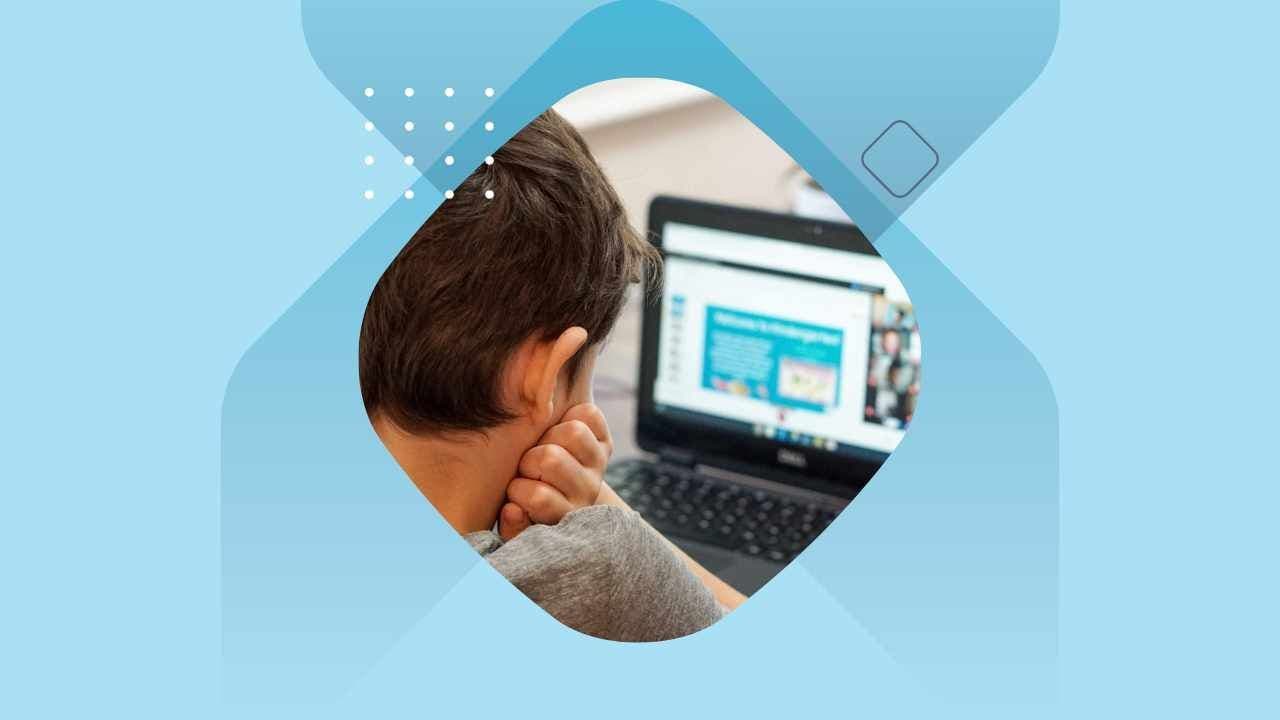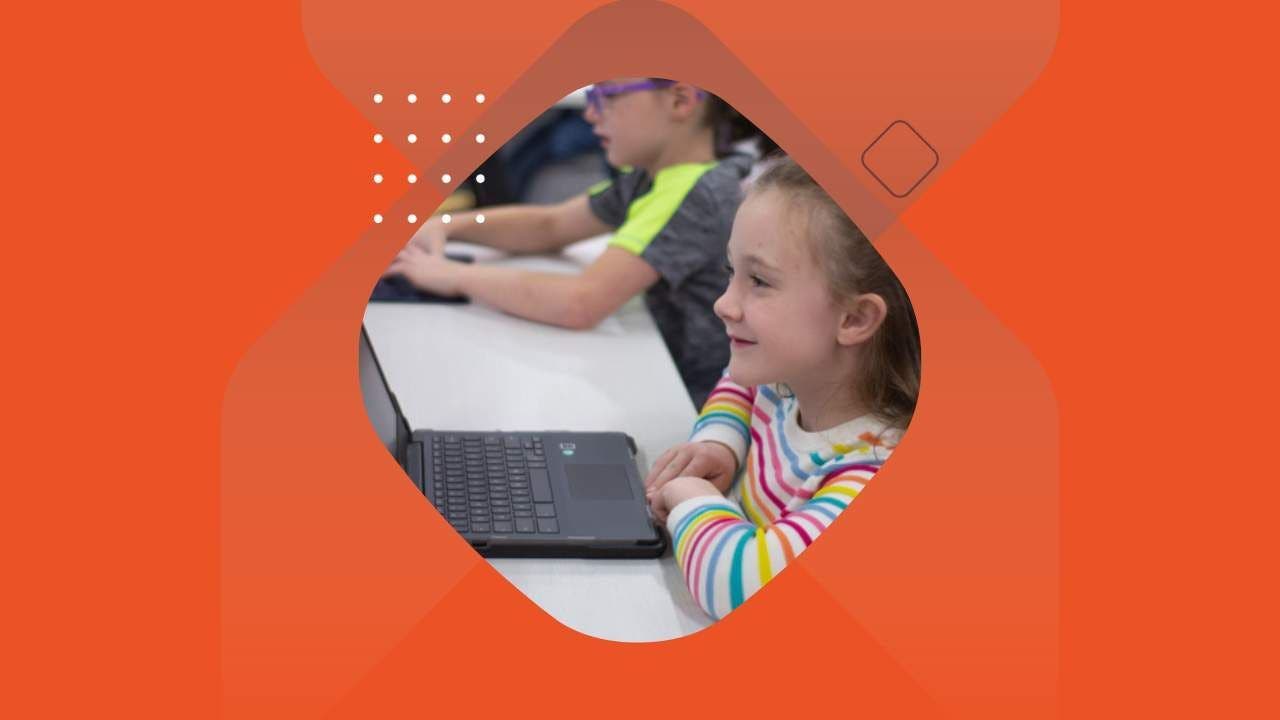UPDATE: A third application window will open on April 28th, 2022. Have a question about using ECF for your next tech initiative? We’ve talked to ECF experts and done the digging for you into the Emergency Connectivity Fund. Check out our Frequently Asked Questions to get the answers you’re looking for fast.
Q: How should applicants determine their unmet needs?
A: The FCC has not prescribed a specific way for applicants to go about estimating what they will need to address unmet needs.
In the case of schools, applicants should provide their best estimates about the number of students who did not have access to adequate connected devices, broadband connections, or both when the pandemic began; the number of students who do not currently have adequate access; and how the applicant expects those numbers to change with the requested ECF Program support.
While the FCC has not dictated specific data collection requirements for estimating the unmet for students, schools must describe how and when they collected the information that they use for the estimates provided in their responses.
There is no such data collection requirement for libraries to estimate the unmet need for library patrons. However, both schools and libraries must certify that they are seeking support for eligible equipment and/or services for students, school staff, and/or library patrons who would otherwise lack adequate access.
We encourage applicants to make their best efforts to estimate what they will need and apply for ECF funding in a timely manner, just as they do for the E-Rate Program.
Applicants may seek funding for only one fixed broadband connection per location and only one connected device and/or Wi-Fi hotspot per student, school staff member or library patron.
Q: If my school or library is eligible for E-Rate support, is it eligible for the ECF program?
A: Yes.
Q: Are private schools eligible?
A: Yes, private schools are eligible if they meet the definition of elementary or secondary schools as defined in the Elementary and Secondary Education Act (20 U.S.C. § 7801(19) and (45)), are non-profit, and do not have an endowment exceeding $50 million.
Q: Do eligible connected devices need to be capable of connecting to a cellular service (LTE or 5G)?
A: No. While laptop computers and tablet computers must be capable of connecting to broadband internet in order to be eligible for funding as a connected device, they do not need to be capable of connecting via a cellular service. We expect the connected devices to be Wi-Fi enabled and able to support video conferencing platforms and other software necessary to ensure full participation in remote learning.
Q: Will the ECF Program support installation and configuration performed by a third-party vendor that is different from the vendor that sold the equipment to the applicant?
A: No. Installation and configuration costs will only be eligible for ECF support if they are provided by the same vendor that is providing the eligible equipment.
Q: Are Chromebooks and iPads eligible as connected devices?
A: Yes. Applicants may request ECF support for Chromebooks, iPads and other laptops or tablets. We expect these devices to be Wi-Fi enabled and able to support video conferencing platforms and other software necessary to ensure full participation in remote learning. Chromebooks may be requested under the laptop equipment category.
Q: Can applicants lease connected devices?
A: Yes, connected devices may be leased, but the cost of the leased devices must be reasonable. USAC will carefully review requests for leased devices to ensure the costs are reasonable compared to the $400 limit for purchasing a connected device.
Q: Can an applicant request funding for connected devices or Wi-Fi hotspots for all of its students as part of a 1:1 device initiative?
A: No. Applicants must certify, as part of their funding application, that they are only seeking support for eligible equipment and services provided to students and school staff who would otherwise lack access to connected devices or broadband services.
Q: Are Wi-Fi hotspots designed for many users, such as on a bus (e.g. 100+ users), limited to $250?
A: No, the $250 limit is a cap on the hardware cost for a Wi-Fi hotspot provided to an individual student, school staff, or a library patron. As with other eligible equipment and services, however, costs must be reasonable. Applicants should explain in their funding request narratives how the multi-user Wi-Fi hotspot is being used or provide an explanation for the higher cost and why the equipment was selected.
Q: Can a school or library purchase connected devices that cost more than $400?
A: Yes, schools and libraries may buy more expensive laptops, tablets, or Wi-Fi hotspots, but they can only be reimbursed up to $400 for each laptop or tablet and up to $250 for Wi-Fi Hotspots.
Q: Do I need a SAM.gov account if I am an annual E-Rate applicant?
A: SAM.gov registration is necessary for all entities that receive funds from the U.S. government. Because this is not currently required to participate in the E-Rate program, applicants who may not have registered before should begin the process now. Service providers that agree to invoice on behalf of applicants also need to be registered with SAM.gov. Applicants who are already registered with SAM.gov do not need to re-register but do need to make sure that their renewal is current.
Please note that SAM.gov registration is not required in order to submit an ECF FCC Form 471 application.
Additional answers added 7/14/2021
Q: Do I need to participate in E-Rate to participate in the ECF Program?
A: No, you do not need to be a current (or future) E-rate participant to be eligible for the ECF Program.
Q: If a school reopens, and students and school staff are attending school in person, is off-campus equipment or service for that student or teacher still eligible for ECF support?
A: Yes. Such equipment and services are eligible if needed to meet the remote learning needs of students, such as homework, or school staff who would otherwise lack sufficient access to connected devices and/or a broadband internet access connection while off campus
Q: If a district-owned connected device was assigned to a student, but the device is no longer sufficient to engage in remote learning (for example, a three-year-old laptop), can the district request ECF support for a new connected device?
A: Yes. If a device is no longer sufficient for a student to engage in remote learning, ECF support can be used to provide a new device. Applicants must certify on their funding application that they are only seeking support “for eligible equipment and/or services provided to students and school staff who would otherwise lack connected devices and/or broadband services sufficient to engage in remote learning.”
Q: Are Wi-Fi hotspots designed for many users, such as on a bus (e.g. 100+ users), limited to $250?
A: No, the $250 limit is a cap on the hardware cost for a Wi-Fi hotspot provided to an individual student, school staff, or a library patron. As with other eligible equipment and services, however, costs must be reasonable. Applicants should explain in their funding request narratives how the multi-user Wi-Fi hotspot is being used or provide an explanation for the higher cost and why the equipment was selected.
Q: Do schools and libraries need to keep documentation of the specific students, school staff, or library patrons who receive ECF-supported service or equipment?
A: Applicants do need to document the students, school staff, and library patrons served at each location and must retain that information for at least 10 years from the last date of service or delivery of equipment. To the extent Commission or USAC staff needs access to this information, for example, for audit purposes, they will request and safeguard this information in accordance with the applicable privacy laws and guidance, including using de-identified and anonymized information whenever possible.
Q: Will USAC wait to approve applications until the application filing window closes?
A: Yes. In order to assess the demand for funds, USAC will wait until the application filing window is closed before issuing funding commitment decision notifications.
Q: Do schools need to identify the names of specific students who lack access to a connected device or broadband connectivity on the application?
A: Only best estimates about the number of students who did not have access to adequate connected devices, broadband connections, or both when the pandemic began, as well as the number of students who do not currently have access, are required for schools at the time they submit their application. No personally identifiable information (such as the names of students) should be provided to USAC during the application process.
Q: Are applicants obligated to repair devices that break before the three-year mark?
A: No. However, it is the obligation of schools and libraries to keep track of and document the devices and other equipment that they distribute, and that includes documenting information about missing, lost, or damaged equipment.
Additional answers added 7/19/2021
Q: Will my school be audited to confirm compliance with requirements of the ECF funding?
A: Possibly, so your schools should be prepared. The following is pulled from the FCC ECF Report and Order FCC-21-58A1
§ 54.1714 Audits, inspections, and investigations.
(a) Audits. Schools, libraries, consortia, and service providers shall be subject to audits and other investigations to evaluate their compliance with the statutory and regulatory requirements for the Emergency Connectivity Fund, including those requirements pertaining to what equipment and services are purchased, what equipment and services are delivered, and how equipment and services are being used.
(b) Inspections and Investigations. Schools, libraries, consortia, and service providers shall permit any representative (including any auditor) appointed by a state education department, the Administrator, the Commission and its Office of Inspector General or any local, state or federal agency with jurisdiction over the entity to enter their premises to conduct inspections for compliance with the statutory and regulatory requirements of the Emergency Connectivity Fund.
(c) Production of Records for Audits, Inspections, and Investigations. Where necessary for compliance with federal or state privacy laws, Emergency Connectivity Fund participants may produce records regarding students, school staff, and library patrons in an anonymized or deidentified format. When requested by the Administrator or the Commission, as part of an audit or investigation, schools, libraries and consortia must seek consent to provide personally identification information from a student who has reached the age of majority, the relevant parent/guardian of a minor student, or the school staff member or library patron prior to disclosure.
Q: What kind of records must my school maintain in compliance with the requirements of the ECF funding?
A: The following is pulled from the FCC ECF Report and Order FCC-21-58A1
§ 54.1715 Records retention.
(a) Equipment and service inventory requirements. Schools, libraries, and consortia shall keep asset and service inventories as follows:(1) For each connected device or other piece of equipment provided to an individual student, school staff member, or library patron, the asset inventory must identify:(i) the device or equipment type (i.e. laptop, tablet, mobile hotspot, modem, router);
(ii) the device or equipment make/model;
(iii) the device or equipment serial number;
(iv) the full name of the person to whom the device or other piece of equipment was provided; and
(v) the dates the device or other piece of equipment was loaned out and returned to the school or library, or the date the school or library was notified that the device or other piece of equipment was missing, lost, or damaged.
(2) For each connected device or other piece of eligible equipment not provided to an individual student, school staff member, or library patron, but used to provide service to multiple eligible users, the asset inventory must contain:(i) the device or equipment type (i.e. laptop, tablet, mobile hotspot, modem, router);
(ii) the device or equipment make/model;
(iii) the device or equipment serial number;
(iv) the name of the school or library employee responsible for that device or equipment; and
(v) the dates the device or equipment was in service.
(3) For services provided to individual students, school staff, or library patrons, the service inventory must contain:(i) the type of service provided (i.e., DSL, cable, fiber, fixed wireless, satellite, mobile wireless);
(ii) the service plan details, including, upload and download speeds and monthly data cap;
(iii) the full name of the person(s) to whom the service was provided;
(iv) the service address (for fixed broadband service only);
(v) the installation date of the service (for fixed broadband service only); and
(vi) the last date of service, as applicable (for fixed broadband service only).
(4) For services not provided to an individual student, school staff member, or library patron, but used to provide service to multiple eligible users, the service inventory must contain:(i) the type of service provided (i.e., DSL, cable, fiber, fixed wireless, satellite, mobile wireless);
(ii) the service plan details, including, upload and download speeds and monthly data cap;
(iii) the name of the school or library employee responsible for the service;
(iv) a description of the intended service area;
(v) the service address (for fixed broadband service only);
(vi) the installation date of the service (for fixed broadband service only); and
(vii) the last date of service, as applicable (for fixed broadband service only).
(b) Records retention. All Emergency Connectivity Fund participants shall retain records related to their participation in the Program sufficient to demonstrate compliance with all program rules for at least ten (10) years from the last date of service or delivery of equipment.
(c) Production of records. All Emergency Connectivity Fund participants shall present such records upon request any representative (including any auditor) appointed by a state education department, the Administrator, the Commission and its Office of Inspector General or any local, state or federal agency with jurisdiction over the entity. When requested by the Administrator or the Commission, schools, libraries and consortia must seek consent to provide personally identification information from a student who has reached the age of majority, the relevant parent/guardian of a minor student, or the school staff member or library patron prior to disclosure.
Additional answers added 9/16/2021
Q: Are taxes included as part of the $400 maximum for connected devices?
A: No. Taxes are not included as part of the $400 cap for connected devices, but reasonable fees will be included within the $400 amount.
Q: After submitting an application during the first application filing window, a school or library realizes they need additional equipment and services to meet their students’, school staff’s, or library patrons’ unmet needs. Can the school or library submit another application during the second window to address these unmet needs?
A: Yes. If a school or library determines there is additional need for eligible equipment and/or services, they may submit another application during the second application filing window to address these unmet needs. However, applicants should not seek support for equipment and services already requested during the first application filing window. Applicants requesting support for similar services or equipment should clearly explain the differences between their requests. Submitting duplicate requests may lead to additional delay in the review of the applications and duplicate applications will be denied.
Q: How will requests be prioritized?
A: In the event that demand exceeds available funding during any ECF application filing window, funding requests will be prioritized based on an applicant’s E-Rate discount rate for category one services, adjusted to provide a five percent increase for rural schools and libraries. This means that those schools and libraries entitled to a higher E-Rate discount will receive funding ahead of those entitled to a lower discount rate, as reflected in the discount matrix provided in section 54.1708(c) of the ECF rules.
Q: If a school or library submitted an application during the first application filing window and has not heard from USAC on their funding request by the time the second application filing window opens (e.g., September 28, 2021), should they re-apply for funding in the second window?
A: No. Applicants should not re-file applications that were already submitted in the first application filing window. Submitting duplicate requests may lead to additional delay in the review of applications and duplicate applications will be denied.
Q: I applied during the initial application filing window and I’m still waiting to hear back about my application. Is there anything else I should be doing now?
A: Double check that you have completed all of the registrations necessary for applying for and/or receiving ECF support, including:
- Obtaining a DUNS Number,
- Obtaining an FCC Registration Number,
- Obtaining a Billed Entity Number, and
- Registering with SAM.gov.
Be sure that the information provided in these registrations match the information included on your application. For more information about these registrations, review the FCC’s Getting Started webpage.
Q: If I have the credentials to access the ECF Portal, can I begin filling out my application for the second application filing window before the window opens?
A: No. Applicants should not begin completing an ECF FCC Form 471 in the ECF Portal for the second application filing window until the window opens on September 28, 2021. In the meantime, applicants can learn more about steps that can be taken now to prepare for the second application filing window by reviewing the FCC’s Getting Started Guide. Additionally, to learn more about the application process, review the FCC’s How to Apply Guide, or preview the application by visiting USAC’s ECF FCC Form 471 application webpage or watching USAC’s ECF FCC Form 471 walkthrough.
Q: Will I have visibility in the ECF Portal for the committed version of my application?
A: Yes. Applicants will be able to see the committed version of the funding requests submitted within an application.
Q: Will I receive a notification when the PIA reviewer contacts me about my application?
A: All full rights users in the ECF Portal will receive an email notification when the PIA reviewer sends an external communication relating to the entity’s application.
Q: I can access the ECF Portal, but can’t file any forms – what can I do?
A: Users that have view-only permissions will only be able to see forms created by others but cannot create forms themselves. The account administrator must upgrade your permissions in order to create forms. Please contact the account administrator for your organization.






